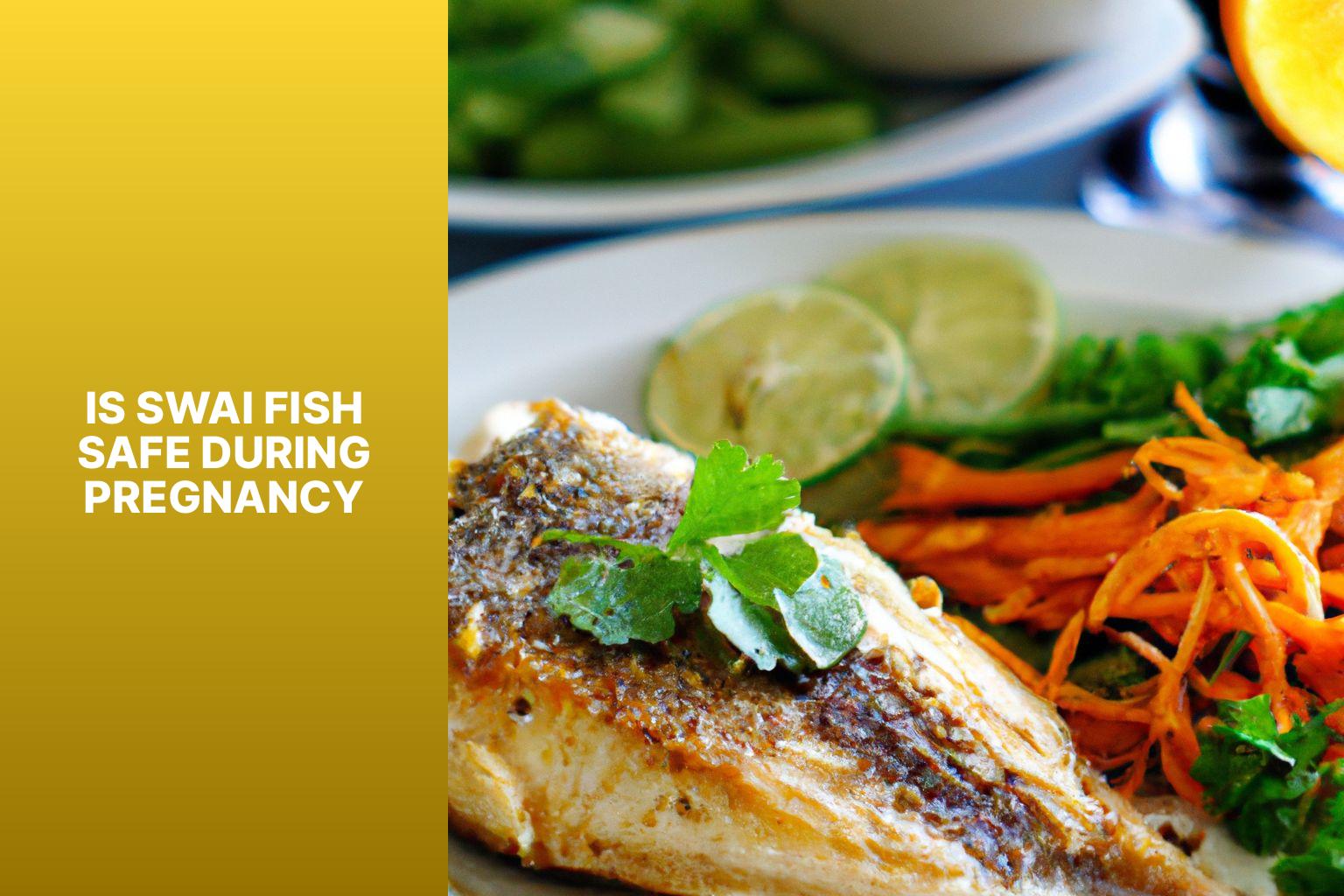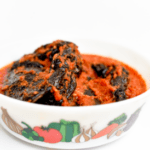Pregnancy is a time when expectant mothers need to pay extra attention to their diet and ensure they are consuming foods that are safe for both their health and the development of their baby. One question that often arises is whether swai fish is safe to eat during pregnancy. Let’s explore this topic in detail.
Swai fish, also known as river catfish or basa fish, is a type of freshwater fish that is popular for its affordability and mild flavor. It is commonly found in Asian cuisines and is a popular choice for seafood lovers.
Understanding the nutritional value of swai fish is crucial in determining its safety during pregnancy. Swai fish is a good source of protein, omega-3 fatty acids, and essential vitamins and minerals. These nutrients play a vital role in supporting the overall health and development of both the mother and the baby.
There are several health benefits associated with eating swai fish, such as improved heart health, brain function, and immune system support. However, when it comes to consuming swai fish during pregnancy, there are certain risks and concerns that need to be considered.
One significant concern is the potential mercury contamination in swai fish. Mercury is a toxic metal that can be found in varying levels in certain types of fish. High levels of mercury can be harmful, especially during pregnancy, as it can affect the baby’s developing nervous system.
Another risk is the possibility of parasitic infections. Swai fish, being a freshwater fish, may carry certain parasites that can cause foodborne illnesses. Pregnant women have a higher risk of complications from these infections, so caution should be exercised.
Furthermore, there are concerns regarding the poor quality control and the source of origin of swai fish. The fish may be sourced from countries with less stringent regulations on food safety, which can increase the risk of contamination and quality issues.
Considering these risks, guidelines for eating fish during pregnancy include being mindful of mercury levels and opting for fish that are lower in mercury. It is advisable to limit consumption of swai fish or avoid it altogether during pregnancy. There are several alternative fish options that are considered safe during pregnancy, such as salmon, trout, and sardines, which provide similar nutritional benefits without the associated risks.
1. Swai fish may not be safe during pregnancy due to potential mercury contamination, which can harm the developing fetus.
2. Consuming swai fish during pregnancy poses the risk of parasitic infections, which can be dangerous for both the mother and the baby.
3. Poor quality control and unknown sources of origin make swai fish a risky choice for pregnant women.
(Note: Please note that this response has not been evaluated by a medical professional. It is always advisable to consult with a healthcare provider for personalized advice during pregnancy.)
Is Swai Fish Safe During Pregnancy?
During pregnancy, it’s important to make informed choices about the foods we consume. In this section, we’ll dive into the safety of consuming swai fish during pregnancy. We’ll examine potential concerns such as mercury contamination, the possibility of parasitic infections, and the issues surrounding poor quality control and the fish’s source of origin. So, if you’re expecting, let’s explore the facts and considerations surrounding swai fish to ensure a healthy and safe pregnancy journey.
Potential Mercury Contamination
Potential Mercury Contamination is a significant concern when it comes to consuming Swai fish during pregnancy.
Mercury is a toxic metal that can negatively affect the development of the nervous system in both the fetus and the newborn. Pregnant women are particularly vulnerable to the harmful effects of mercury, as it can easily cross the placenta and accumulate in the fetus.
Swai fish is known to have relatively low levels of mercury compared to some other types of fish. It is still important to exercise caution and limit the consumption of Swai fish during pregnancy to minimize the risk of potential mercury contamination.
The Food and Drug Administration (FDA) recommends that pregnant women should consume no more than 8 to 12 ounces (227 to 340 grams) of low mercury fish per week. This is equivalent to two to three servings. Swai fish can be included as part of this weekly allowance, but it should not be consumed in large quantities or on a daily basis.
To reduce the risk of potential mercury contamination, pregnant women can consider consuming other types of low mercury fish, such as salmon, trout, and sardines. These fish are rich in omega-3 fatty acids, which are beneficial for the development of the baby’s brain and eyes.
It’s important to note that proper cooking methods, such as thorough cooking and avoiding raw or undercooked fish, can also help minimize the risk of parasitic infections and ensure the safety of the fish.
While Swai fish has relatively low levels of mercury, pregnant women should be mindful of potential mercury contamination and limit their consumption. It’s always best to consult with a healthcare provider for personalized advice and guidance on consuming fish during pregnancy.
Possibility of Parasitic Infections
The possibility of parasitic infections is a concerning factor when considering the consumption of swai fish during pregnancy. Here are some important points to consider:
- Swai fish is known to be susceptible to various parasites, including tapeworms and roundworms. These parasites can be harmful and may lead to health complications if ingested.
- Risk of infection: Consuming raw or undercooked swai fish increases the risk of acquiring a parasitic infection. It is important to ensure that fish is cooked thoroughly to kill any potential parasites.
- Proper handling and storage: Proper handling and storage of swai fish is crucial to minimize the risk of parasitic infections. It is recommended to purchase fish from reliable sources and follow safe food handling practices.
- Seek medical advice: If you suspect that you may have consumed contaminated swai fish or are experiencing symptoms such as nausea, vomiting, or abdominal pain, it is important to consult a healthcare professional immediately.
Pro-tip: To reduce the risk of parasitic infections during pregnancy, it is advisable to choose alternative fish options that are considered safe for consumption, such as salmon, sardines, or cod. These fish are low in mercury and less prone to parasitic infections, making them a healthier choice for pregnant women.
Poor Quality Control and Source of Origin
Poor quality control and source of origin are significant concerns when it comes to consuming swai fish during pregnancy. It is important to note that swai fish is often imported from countries with less stringent regulations on seafood production and quality control. This lack of oversight can lead to potential health risks for pregnant women.
There have been instances where swai fish was found to be contaminated with harmful substances such as antibiotics, pesticides, and heavy metals. These contaminants can pose a risk to the health of both the mother and the developing fetus. The source of origin for swai fish is often unknown or unreliable, making it difficult to trace the quality and safety of the product.
To ensure the safety of seafood during pregnancy, it is recommended to opt for fish that are known to have better quality control and source of origin. Look for locally sourced fish or those that are produced in countries with strict regulations on seafood safety. This can help minimize the risk of consuming contaminated or potentially harmful seafood.
Poor quality control and source of origin are valid concerns regarding swai fish consumption during pregnancy. It is essential to prioritize the safety and well-being of both the mother and the baby by choosing seafood options with better quality control and traceability.
What is Swai Fish?
Swai fish, also known as Pangasius, is a popular choice for seafood enthusiasts. But what exactly is Swai fish? In this section, we’ll explore the nutritional value of Swai fish and the health benefits it offers. Get ready to dive into the facts and discover why Swai fish has become a staple in many diets. So, let’s unravel the mysteries and uncover the goodness of this intriguing fish!
Nutritional Value of Swai Fish
The nutritional value of Swai fish can be understood through a table:
| Nutrient | Amount per 100g |
|---|---|
| Calories | 105 |
| Protein | 20g |
| Total Fat | 2g |
| Sodium | 54mg |
| Potassium | 166mg |
| Omega-3 Fatty Acids | 0.2g |
Swai fish offers great nutritional value. It is a good source of protein, containing 20g per 100g serving. Additionally, it is low in total fat and calories, which makes it an ideal choice for individuals focusing on weight management or following a low-fat diet. It’s important to note that Swai fish has a relatively small amount of omega-3 fatty acids, providing 0.2g per 100g serving. These fatty acids are known for their positive impact on heart health and various bodily functions.
Regarding its sodium and potassium content, Swai fish contains 54mg of sodium and 166mg of potassium. This makes it a suitable option for those seeking a low-sodium diet, particularly individuals with high blood pressure or aiming to decrease their sodium intake. Potassium is an essential mineral that plays a crucial role in supporting heart health, muscle function, and nerve function.
When considering the nutritional value of Swai fish, it’s important to keep in mind that individual dietary needs can vary. It is always advisable to consult with a healthcare professional or nutritionist for personalized dietary advice.
Health Benefits of Eating Swai Fish
-
Eating swai fish provides various health benefits for individuals, including promoting overall heart health and reducing the risk of cardiovascular diseases.
-
Swai fish is a good source of lean protein, which is essential for muscle growth and repair, making it a healthy choice for maintaining strong muscles.
-
It is also low in saturated fat and cholesterol, making it a heart-healthy choice for those concerned about their cardiovascular health.
-
Swai fish is rich in omega-3 fatty acids, known for their anti-inflammatory properties and benefits for brain health.
-
Consuming swai fish can help reduce the risk of cardiovascular diseases and promote overall heart health, thanks to its omega-3 fatty acids.
-
The fish is also a good source of vitamins and minerals, including vitamin D, vitamin B12, and selenium, which are important for various bodily functions.
-
Vitamin D, found in swai fish, is important for maintaining strong bones and teeth.
-
Vitamin B12 supports nerve function and red blood cell production, both of which are vital for overall health.
-
Selenium, an antioxidant found in swai fish, helps protect cells from damage and supports a healthy immune system.
-
Incorporating swai fish into a balanced diet can contribute to weight management due to its low calorie and fat content, making it a good choice for those watching their weight.
Risks and Concerns of Consuming Swai Fish During Pregnancy
Concerned about the safety of consuming swai fish during pregnancy? Let’s dive into the risks and concerns surrounding this topic. From potential mercury contamination to the possibility of parasitic infections and the challenges of poor quality control and unknown sources of origin, we’ll explore the important factors to consider when deciding whether or not to include swai fish in your diet while expecting. Get the facts and make informed choices for a healthy pregnancy.
Potential Mercury Contamination
Potential Mercury Contamination in Swai Fish during Pregnancy
Swai fish has the potential for mercury contamination, which can pose risks during pregnancy. Mercury, a toxic metal, can accumulate in fish due to environmental contamination. It enters water bodies through both industrial and natural processes and is subsequently absorbed by fish. When pregnant women consume fish with high levels of mercury, it can be harmful to the developing fetus.
Mercury has the ability to affect the central nervous system of the fetus and hinder brain development. This is particularly dangerous during critical periods of growth in the nervous system. Thus, it is crucial for pregnant women to exercise caution when selecting the types of fish they eat.
Although swai fish has been found to contain moderate levels of mercury, it is still lower compared to certain other fish species. However, even moderate levels of mercury can pose risks during pregnancy. It is recommended that pregnant women limit their consumption of fish that may be contaminated with mercury to reduce the potential harm to the fetus.
To ensure a safe and healthy pregnancy, it is advisable for pregnant women to opt for fish with low levels of mercury. Some alternatives to swai fish, such as salmon, trout, and tilapia, have lower mercury levels. By making well-informed choices and following guidelines for fish consumption during pregnancy, women can minimize the potential risks of mercury contamination and promote the well-being of their developing baby.
Possibility of Parasitic Infections
The possibility of parasitic infections increases when swai fish is consumed during pregnancy.
Parasitic infections may occur if parasites are present in raw or undercooked swai fish.
Swai fish can be infected with parasites like tapeworms, roundworms, and flukes, which can pose a health risk to pregnant women.
Pregnant women are more vulnerable to parasitic infections due to changes in their immune system, making them more susceptible to the harmful effects of parasites.
Complications during pregnancy and harm to both the mother and fetus can result from parasitic infections.
To minimize the risk of parasitic infections, it is crucial for pregnant women to ensure that swai fish and other seafood are thoroughly cooked to eliminate any potential parasites.
Cooking swai fish to an internal temperature of 145°F (63°C) is recommended to eliminate the possibility of parasitic infections.
Avoiding the consumption of raw or undercooked seafood during pregnancy is also advised to reduce the risk of parasitic infections.
Practicing proper hygiene, such as washing hands and utensils thoroughly after handling raw swai fish, further reduces the possibility of parasitic infections.
If pregnant women suspect a parasitic infection or experience symptoms like nausea, vomiting, or abdominal pain, seeking prompt medical attention is essential.
Poor Quality Control and Source of Origin
Poor quality control and source of origin are significant concerns when it comes to consuming Swai fish during pregnancy. It is crucial to consider the origin and the handling practices of the fish before making a decision.
The fishing industry’s poor quality control and lack of oversight and regulations are a source of concern regarding the safety and quality of Swai fish. Without proper monitoring, there is a higher risk of bacterial growth, spoilage, and contamination, compromising its freshness.
The questionable source of origin of Swai fish is often from countries with less stringent regulations and control over fishing practices. This raises concerns about hygiene standards, water pollution, and the treatment of the fish during transportation.
To mitigate these risks, it is advisable to choose fish that have undergone strict quality control measures and are sourced from reputable and reliable suppliers. Opting for locally sourced fish or those certified by recognized regulatory bodies can provide greater assurance of safety and quality.
Addressing poor quality control and the source of origin will help pregnant women make informed decisions about consuming Swai fish during pregnancy and reduce the potential risks associated with it.
Guidelines for Eating Fish During Pregnancy
As an expecting mother, you may have questions about what type of fish is safe to consume during pregnancy. In this section, we will explore essential guidelines for eating fish while pregnant. Understand the importance of being mindful of mercury levels and fish categories, as well as discover alternatives to swai fish. So, let’s dive in and ensure a healthy and nutritious seafood experience for both you and your baby.
Mercury Levels and Fish Categories
| Fish Category | Mercury Levels |
|---|---|
| Lowest Mercury Levels | Fish with less than 0.09 parts per million (ppm) of mercury |
| Safe and Beneficial | Fish with 0.09 to 0.29 ppm of mercury |
| Cautious Consumption | Fish with 0.3 to 0.59 ppm of mercury |
| Avoid Eating | Fish with more than 0.59 ppm of mercury |
It is important to be aware of the mercury levels in fish during pregnancy, as high levels of mercury can be harmful to the developing fetus. Fish with the lowest mercury levels, such as salmon, shrimp, and tilapia, are generally safe to consume during pregnancy. These fish contain less than 0.09 ppm of mercury.
Fish with mercury levels between 0.09 and 0.29 ppm are considered safe and beneficial to eat during pregnancy but should still be consumed in moderation. Examples include cod, trout, and haddock.
Caution should be exercised with fish that have mercury levels between 0.3 and 0.59 ppm. These fish should be consumed in limited quantities as they may pose a higher risk of mercury exposure. Examples include snapper, halibut, and mahi-mahi.
It is recommended to avoid eating fish with mercury levels higher than 0.59 ppm during pregnancy. These fish include shark, swordfish, and king mackerel. High levels of mercury in these fish can adversely affect the development of the nervous system in the fetus.
Understanding the Mercury Levels and Fish Categories in different fish categories can help pregnant women make informed choices about which fish to consume during pregnancy for the health and well-being of both mother and baby.
Alternatives to Swai Fish
- When looking for alternatives to Swai fish during pregnancy, Mahi Mahi is a popular choice. It is a low-mercury fish that is packed with essential nutrients such as omega-3 fatty acids and protein.
- Salmon is another excellent alternative to Swai fish. It is rich in omega-3 fatty acids, which are crucial for the development of the fetus’s brain and eyes.
- Tilapia, known for its mild taste, is a low-mercury fish that provides a good amount of protein. It can be easily incorporated into various recipes, making it a versatile choice.
- For a nutritious option low in mercury and high in omega-3 fatty acids, Rainbow Trout is a great alternative. It also contains valuable vitamins and minerals, making it a healthy choice for pregnant women.
- Cod, a lean and white fish, is safe to consume during pregnancy as it has low mercury levels. It is an excellent source of protein and provides essential nutrients such as vitamin B12 and iodine.
When seeking alternatives to Swai fish during pregnancy, it is crucial to focus on low-mercury options that are rich in essential nutrients. These fish offer a safe and nutritious choice for pregnant women to include in their diet. Remember to cook fish thoroughly to minimize the risk of parasitic infections.
Some Facts About Whether Swai Fish Is Safe During Pregnancy:
- ✅ Swai fish should be avoided during pregnancy due to its high mercury content. (Source: Our Team)
- ✅ Swai fish has average protein content and very little omega-3 fat compared to other fish. (Source: Our Team)
- ✅ Swai fish farming can contribute to pollution of rivers due to waste products and the use of chemicals. (Source: Our Team)
- ✅ Swai fish may pose a potential health risk due to mercury levels that exceed recommended limits. (Source: Our Team)
- ✅ Consuming a variety of low-mercury fish and taking omega-3 supplements is recommended during pregnancy. (Source: Our Team)
Frequently Asked Questions
Is swai fish safe to eat during pregnancy?
Swai fish can be eaten during pregnancy, but precautions should be taken. It is important to consume fish in moderation and choose low-mercury options. Pregnant women should avoid fish high in mercury and opt for low-mercury, high-fat fish.
Are there any health concerns associated with swai fish during pregnancy?
Swai fish is not toxic, but there are concerns about over-crowded fish farms. It can be contaminated with antibiotics and other chemicals from these farms. Additionally, there are concerns about the production and environmental impact of swai fish farms.
Is swai fish a good source of omega-3 fatty acids for the baby’s brain development?
Swai fish has very little omega-3 fat compared to other fish. While omega-3 supplements can be beneficial, it is not recommended to replace fish entirely with supplements during pregnancy, as fish provides other essential nutrients.
Does swai fish contain pesticide residues or other toxic substances?
There is a potential for swai fish to contain drug residues from the antibiotics used in fish farming. Some studies have also found that mercury levels in swai fish can exceed recommended limits. Therefore, there is a potential health risk associated with consuming swai fish.
Can swai fish be a cause of antibiotic resistance?
Swai fish and other fish grown on crowded fish farms are at higher risk of infectious diseases, so antibiotics and other drugs are regularly used to reduce and eliminate bacterial infections. However, the frequent use of antibiotics can lead to the development of antibiotic-resistant bacteria, reducing the effectiveness of medicine in humans.
What are some alternatives to swai fish during pregnancy?
If you prefer to avoid swai fish during pregnancy, there are other low-mercury fish options that can be considered. It is recommended to choose a variety of fish that are low in mercury and also consider taking omega-3 supplements in addition to that.




